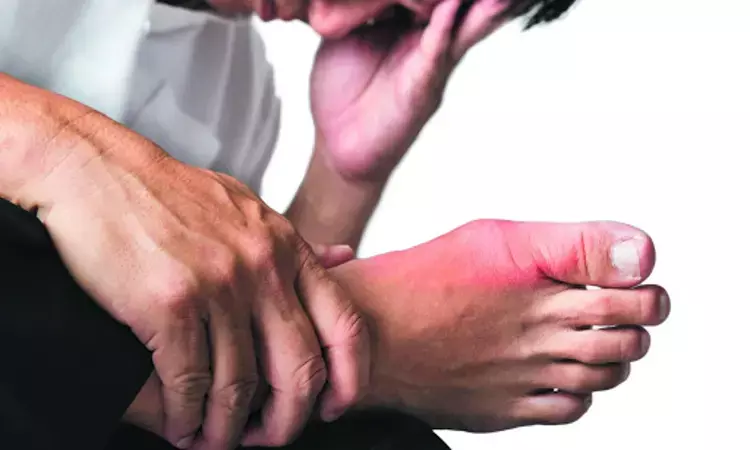- Home
- Medical news & Guidelines
- Anesthesiology
- Cardiology and CTVS
- Critical Care
- Dentistry
- Dermatology
- Diabetes and Endocrinology
- ENT
- Gastroenterology
- Medicine
- Nephrology
- Neurology
- Obstretics-Gynaecology
- Oncology
- Ophthalmology
- Orthopaedics
- Pediatrics-Neonatology
- Psychiatry
- Pulmonology
- Radiology
- Surgery
- Urology
- Laboratory Medicine
- Diet
- Nursing
- Paramedical
- Physiotherapy
- Health news
- Fact Check
- Bone Health Fact Check
- Brain Health Fact Check
- Cancer Related Fact Check
- Child Care Fact Check
- Dental and oral health fact check
- Diabetes and metabolic health fact check
- Diet and Nutrition Fact Check
- Eye and ENT Care Fact Check
- Fitness fact check
- Gut health fact check
- Heart health fact check
- Kidney health fact check
- Medical education fact check
- Men's health fact check
- Respiratory fact check
- Skin and hair care fact check
- Vaccine and Immunization fact check
- Women's health fact check
- AYUSH
- State News
- Andaman and Nicobar Islands
- Andhra Pradesh
- Arunachal Pradesh
- Assam
- Bihar
- Chandigarh
- Chattisgarh
- Dadra and Nagar Haveli
- Daman and Diu
- Delhi
- Goa
- Gujarat
- Haryana
- Himachal Pradesh
- Jammu & Kashmir
- Jharkhand
- Karnataka
- Kerala
- Ladakh
- Lakshadweep
- Madhya Pradesh
- Maharashtra
- Manipur
- Meghalaya
- Mizoram
- Nagaland
- Odisha
- Puducherry
- Punjab
- Rajasthan
- Sikkim
- Tamil Nadu
- Telangana
- Tripura
- Uttar Pradesh
- Uttrakhand
- West Bengal
- Medical Education
- Industry
Control of Anthropometric Measures and Lipids may improve Gout Outcomes

A recent study, published in Rheumatic and Musculoskeletal Diseases, delved into the nuanced relationship between gout outcomes, lifestyle changes, and lipid levels. The research aimed to analyze the impact of anthropometric measures and lipid levels on gout outcomes in patients receiving treatment. Among the key determinants of gout outcomes, waist circumference and lipid levels emerged as crucial predictors.
Led by Dr. Till Uhlig and colleagues, the study included 211 patients with gout, predominantly male with an average age of 56.4 years. Over the 2-year duration, anthropometric measures remained relatively stable, whereas cholesterol and low-density lipoprotein cholesterol (LDL-C) showed a noticeable decrease by the end of the first year. Notably, high waist circumference (WC) and lipid levels emerged as strong predictors of unfavorable gout outcomes at the end of the 2-year period.
Patients with a recent gout flare and elevated serum urate levels received comprehensive gout education and were initiated on a 'treat-to-target' urate-lowering therapy over a year. Anthropometric measures including body mass index (BMI), waist circumference (WC), and waist-height ratio (WHR) were recorded yearly alongside lipid level assessments for the 2-year duration.
- Proportion of Patients: Anthropometric measures remained largely unchanged over the 2-year study duration.
- Cholesterol Levels: Demonstrated a reduction at the end of the first year.
- Low-Density Lipoprotein Cholesterol (LDL-C): Showed a noticeable decrease by the end of the first year.
- Association with Gout Outcomes: High waist circumference (WC) and elevated lipid levels were predictors of unfavorable gout outcomes after the 2-year study period.
- Odds Ratio for Achieving sUA Target at Year 2:
- WC: 0.96 per cm (95% CI: 0.93 to 0.99)
- High-density lipoprotein cholesterol: 5.1 per mmol/L (95% CI: 1.2 to 22.1)
- Odds Ratio for Gout Flare during Year 2:
- High LDL-C: 1.8 per mmol/L (95% CI: 1.2 to 2.6)
The study’s findings underscore the significance of monitoring anthropometric measures and lipid levels in patients receiving continuous treatment for gout. Predictive relationships between high waist circumference, lipid levels, and unfavorable gout outcomes highlight the importance of managing these factors to optimize gout management strategies.
Reference:
Uhlig T, Karoliussen LF, Sexton J, Kvien TK, Haavardsholm EA, Hammer HB. Lifestyle factors predict gout outcomes: Results from the NOR-Gout longitudinal 2-year treat-to-target study. RMD Open. 2023;9(4):e003600. Published 2023 Dec 1. doi:10.1136/rmdopen-2023-003600
Dr Riya Dave has completed dentistry from Gujarat University in 2022. She is a dentist and accomplished medical and scientific writer known for her commitment to bridging the gap between clinical expertise and accessible healthcare information. She has been actively involved in writing blogs related to health and wellness.
Dr Kamal Kant Kohli-MBBS, DTCD- a chest specialist with more than 30 years of practice and a flair for writing clinical articles, Dr Kamal Kant Kohli joined Medical Dialogues as a Chief Editor of Medical News. Besides writing articles, as an editor, he proofreads and verifies all the medical content published on Medical Dialogues including those coming from journals, studies,medical conferences,guidelines etc. Email: drkohli@medicaldialogues.in. Contact no. 011-43720751


